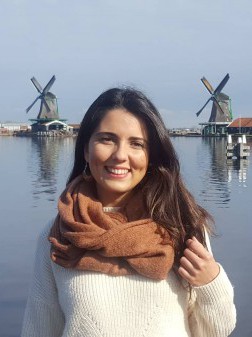abstract
The reaction of the macrocyclic cavitand cucurbit[6]uril (CB[6]) and the diaqua complex [MoO2Cl2(H2O)(2)] in hydrochloric acid solution gave a water insoluble supramolecular compound with the general composition 2[MoO2Cl2(H2O)(2)]center dot CB[6]center dot xH(2)O center dot yHCl center dot z(CH3COCH3) (2). Single crystal X-ray diffraction (XRD) analysis revealed the presence of barrel-shape supramolecular entities, {CB[6]center dot 10(H2O)}, aligned in layers which are shifted relative to adjacent layers to form a brick-like pattern. The CB[6]/water hydrogen-bonded entities further engage in intermolecular interactions with water, HCl and [MoO2Cl2(H2O)(2)] molecules to form a three-dimensional (3D) framework. Compound 2 was characterised by thermogravimetric analysis (TGA), IR and Raman vibrational spectroscopy, and C-13{H-1} CP MAS NMR. The reference complex [MoO2Cl2(H2O)(2)]center dot(diglyme)(2) (1) and compound 2 were studied for the oxidative catalytic conversion of olefins (cis-cyclooctene, cyclohexene and styrene) with aqueous H2O2 as oxidant. Using alcohols as solvents, 2 was employed in a one-pot two-stage strategy for converting olefins to alkoxy products, which involves oxidation (with H2O2) and acid chemistry. Mechanistic studies were carried out using different intermediates as substrates, and the type of solvent and substrate scope were investigated. The results demonstrated the ability of the CB[6]/Mo-VI supramolecular adduct to function as an acid-oxidation multifunctional catalyst, and its recovery and reuse via relatively simple procedures.
keywords
CAMBRIDGE STRUCTURAL DATABASE; OXO-MOLYBDENUM COMPLEXES; CRYSTAL-STRUCTURES; EFFICIENT CATALYSTS; OXIDATION; COORDINATION; CUCURBITURIL; CYCLOHEXENE; STYRENE; EPOXIDATION
subject category
Chemistry
authors
Nogueira, LS; Antunes, MM; Gomes, AC; Cunha-Silva, L; Pillinger, M; Lopes, AD; Valente, AA; Goncalves, IS
our authors
Projects
CICECO - Aveiro Institute of Materials (UID/CTM/50011/2019)
Sistemas ativados por estímulos para a terapia com monóxido de carbono (SASCOT)
acknowledgements
We acknowledge the support of CICECO - Aveiro Institute of Materials [FCT (FundacAo para a Ciencia e a Tecnologia) Ref. UID/CTM/50011/2019], REQUIMTE-LAQV (UID/QUI/50006/2019), Centre of Marine Sciences - CCMAR (UID/Multi/04326/2019), and the CENTRO 2020 Regional Operational Programme (Project CENTRO-01-0145-FEDER-028031; PTDC/QUI-QOR/28031/2017), co-financed by national funds through the FCT/MEC and the European Union (EU) through the European Regional Development Fund under the Portugal 2020 Partnership Agreement. The FCT and the EU are acknowledged for a Ph.D. grant to L. S. N. (PD/BD/109666/2015). The positions held by M. M. A. and A. C. G. were funded by national funds (OE), through FCT, I.P., in the scope of the framework contract foreseen in the numbers 4, 5 and 6 of article 23 of the Decree-Law 57/2016 of 29 August, changed by Law 57/2017 of 19 July.







